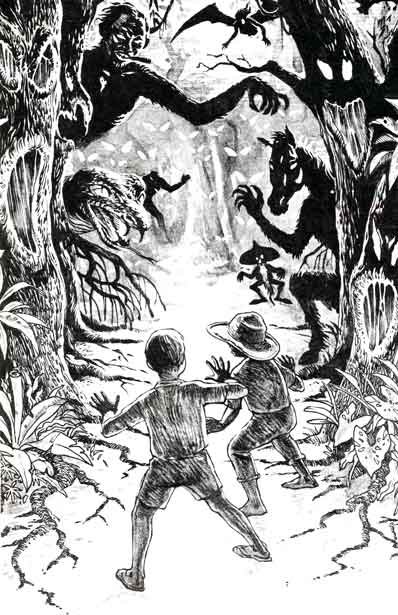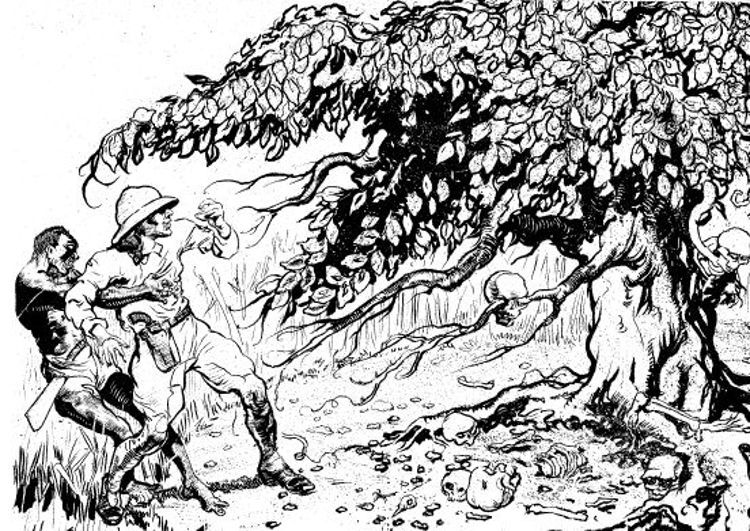During the last few years of surfing the internet and hoarding different books that explore the richness of Philippine Mythology, I came to a conclusion. The most appealing part of ancient tales, besides the exploits of heroes with godlike strength and deities all shrouded in might and magic, are the monsters and creatures that consistently fill me with adrenaline each time I encounter their folktales.
However, there is another aspect to the beasts of the Philippines that may be even more fascinating. Unlike the shapeshifting Aswang or the moon/sun eating duo of Bakunawa and Minokawa, the following beings lack any grotesque, extraordinary appearance or cautionary folk story. They appear as animals and plants on first sight, yet the beleifs surrounding them are capable of bringing us beyond the edge of mystery and strangeness.
The Visayan Bestiary
The treatise on Philippine Culture and Society by William Henry Scott dissects the way of life of early Filipinos from Luzon down to Mindanao. However, much of its bulk revolves around the Visayas where he thoroughly study the people from there appearances, religions, literature and even their natural sciences – which concluded that animals co-existed with the Visayan people. More than just some organism that can be either be domesticated or hunted, our ancestors had a deeper appreciation of the beasts that roamed our land.
These beliefs could be that albino animals carry bad luck (pangasa). The Visayans also identified other animals in their surrounding and paired them with magical and at times odd qualities:
Bangot or Sikop – A hawk known for its proficiency in fishing. It is said that its secret lies in its nest that was made from a special herb. It was said that these herbs can make your arms light and tireless which is why is was highly sought by tailors and fishermen.
Barangitaw – a crocodile species known for their small sizes and known to be friendly with human beings to a point that they allow them to step on their backs in order for them to cross the river.
Basol – a hairy caterpillar that can cause dangerous infection once being touched by someone.
Dumorogmon – a black snake that lives in its make shift nest made from bark-wood leaf. It has a peculiar trait of treating the wounds of its own kind using medical herbs.
Bukaw – owls that always fly in pairs and feared for being a sign of death if it perched on someone’s rooftop.
Kolago or Kagwang – a flying squirrel that when it cries loudly during dawn, there will be no rain for the whole day.
Mago – a charcoal dwelling Tarsier
Magpopo – a viper who shares a similar trait with a rooster for they both crow and have a crests on their head.
Miro – a kind of forest cat that can hypnotize roosting hens with its eyes in order for them to fall and be caught by it.
Taligatos – another snake species which is accompanied by 100 other snakes that serve to protect its body when it was killed.
Tigi – A snake whose poison can be transferred from one person to another if the first one who was bitten would call for someone for help. The one who will respond to the call will acquire the poison instead.
Tila – clams that emit a loud cry when exposed in receding tides.
Walo-walo – a snake known to live by the land for eight days and in the sea for eight days.
Note that some of these creatures are definitely real and not based on myth or folklore, such as the hairy Basol which might be a variety of Rusty Tussock Moth (also known as Higad in Tagalog) in its larva form and can be found almost anywhere in the Philippines – especially in locations still affluent with plants and trees. However, their traits which were entirely unknown before might have led our ancestor to believe that they are something abnormal.

Beast of Divination
Birds, with their capability of flight are beings that can elicit awe in all of us. Birds are probably the ones that inspired us to invent flying vehicles because of our sheer desire to touch the sky and be free.
Yet to our ancestors, bird were more than just an inspiration; they actually helped directly in their daily tasks such as reading the environment – handy when it came to farming, fishing and even hunting in which they relied on their actions in accordance to nature’s favor.
In the Mountain Province, the sound of a Kiling bird signals the farmer to sow their seeds. It must be observed with caution however since the chirp must sound like “ki-ik” which is cried by young Kiling. The maturation of these young birds will also eventually signal the farmer to transplant once they can fully chirp “kiling”. Furthermore,the Kumpisaw bird from Cebu acts like a weather device for farmers. From its tail, one can determine whether a typhoon will come or not.
Meanwhile, “birds of omen” are also prevalent in different ethnic groups throughout the Philippines. Known to be as messenger of Bathala or other divinity that envoys both good and bad fates, this bird is known in Tagalog as Balatiti, Haya in Bicol, Idew in Ifugao, while T’boli call it Limuhen, and Samal named it Salaksak.
The Almugan bird of Blaan have the uncanny ability to talk like humans and dictate what land should be chosen for the farmers to plant their seeds. This bird was also taken care of by the Blaan tribe. This avian could give warning in the form of three loud cries when an enemy or trespasser is approaching..
On the other hand, the “Pulajan Barometer” of Samar doesn’t boast any kinds of technological sophistication but rather observed the location of a Leech inside a jar of water. Each of its locations in the jar indicated the coming of rain, floods and lightning. Again, this is not something magical, but instead it shows that our ancestors learned that some animals are very sensitive to the changes of weather and climate.
Supernatural Plants
Other than the Balete Tree ,which has cemented its status as one of the most enigmatic plants that allegedly have a connection to the world of spirits and mythical beings, there areother plants endemic to the Philippines that are known to have a strange and mystical characteristics.
One of these is the Banana tree which despite being one of the most common trees known to grow almost anywhere in the country (and the only tree that have a “heart” which somehow become a running gag for broke hearted bachelors in the Philippines) has a secret lore that made it a mystical plant in our lore.
As recorded by Dr. Maximo D. Ramos, the Banana flower produces a so called “Mutya”; a magical glowing stone that gives anyone an unimaginable strength if it is swallowed. The only catch is that this Mutya is guarded by Engkanto and one must wrestle with it until dawn before acquiring the power of the stone.
Takang Demonio (Sterculia Foetida), is a species that exhudes a foul odor that resembles excrement and is believed to be the dwelling place of two mythical beings that are similar to the very well known Tikbalang; one is a Tulung which dons the typical Tikbalang guise but has monstrous features like clawed feet instead of hooves, a long mane and large testicles. The other is the Binangunan which is a huge horse with a flaming mane from its head down to its back and tail.
In an account from American Weekly dated January 4, 1945 (“Escaped from the Embrace of the Man-eating Tree”) by William Clute came horrifying details of an experience alleged to have happened in the regions of Mindanao where a tree nearly devoured his team. With its unholy scent and ghastly appearance of vines stretching towards them with sharp spikes that seemed to be produced by that of an unusual liquid like substance (which I think is an acid like saliva). It has been speculated that this story was another take on the 1920’s hoax of man eating plants in Africa.
Finding the Fantastic Beings
Whether they are folkloric beings, cryptids with questionable validity, or based on real beings from the animal kingdom, these creatures still manage to deliver a concrete message to believers and non-believers alike: that nature itself is, and always has been, an ever growing wonder. It’s mystery is indecipherable and it appears that no one will ever truly unlock it. I would argue that it is not unlocking the puzzle and finding the answers that thrills us, but instead the puzzle itself that makes us want more.
ALSO READ: 10 Philippine CRYPTIDS You’ve (probably) Never Heard Of
Sources:
Barangay, Sixteenth-Century Philippine Culture and Society by William Henry Scott
Isabelo’s Archive by Resil B. Mojares
Creatures of the Philippine Lower Mythology by Dr. Maximo D. Ramos
101 Kagilagilalas na Nilalang by Edgar Calabia Samar
Carnivorous Cryptid Plants of the World by Brent Swancer(mysteriousuniverse.org)
Currently collecting books (fiction and non-fiction) involving Philippine mythology and folklore. His favorite lower mythological creature is the Bakunawa because he too is curious what the moon or sun taste like.




